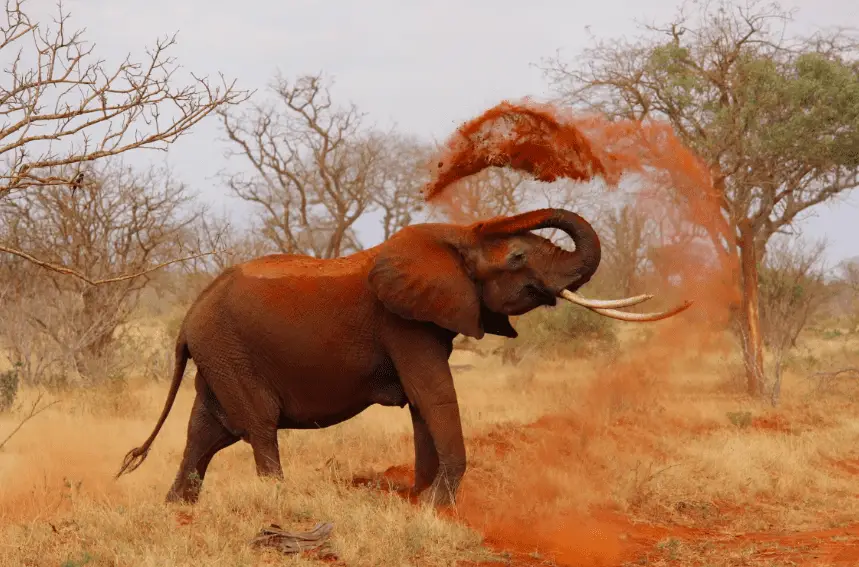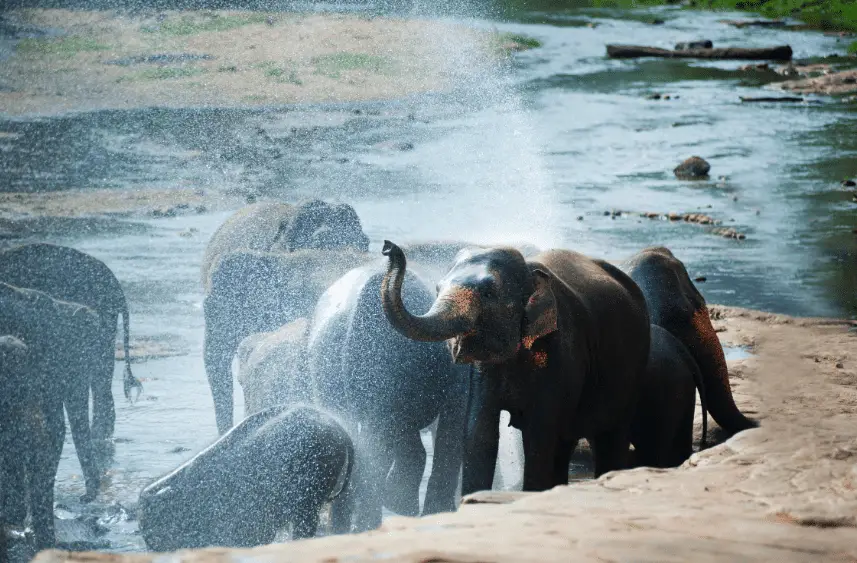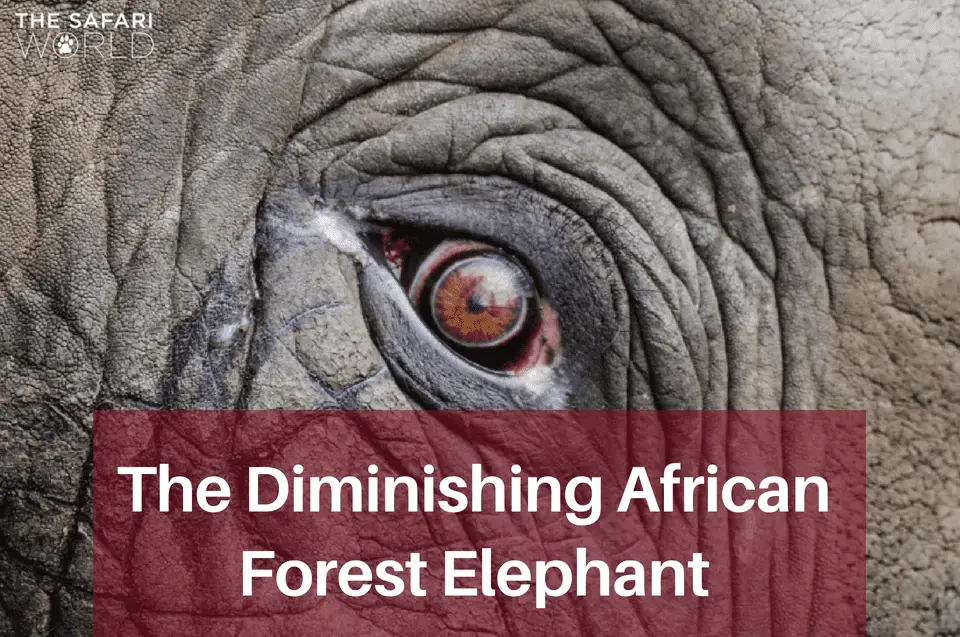Table of Contents
*This post may contain affiliate links. As an Amazon Associate we earn from qualifying purchases.
Africa was home to approximately 2 million elephants at the start of the twentieth century. But today there are less than 500,000 remaining. In spite of current efforts to end the ivory trade and poaching of elephants, people are still killing animals at an alarming rate. Results from the Great Elephant Census show that 96 elephants a day, or 35,040 a year, are subjects to poaching.
At this rate, elephants will be extinct by 2025. The African forest elephant is one of the two surviving species of elephants in Africa, and there are only an estimated 100,000 still alive.
As much as 10 percent of the population losses to poaching each year, which has contributed to its current endangerment. These beautiful, endangered animals are valuable assets to Africa and its rainforests.
The “New” Elephant Species
Initially, there were only two recognized species of elephant: the African elephant and the Asian elephant. It was recently confirmed the two genetically distinct breed of elephants. One inhabiting the rainforest and the one the savanna.
Forest elephants are smaller than savanna elephants, with some major differences in appearance. For instance, they are darker and more wrinkled, and they have straighter pinker tusks and rounder ears. Also, forest elephants have five, rather than four, toenails on their front feet.
In addition to their different appearances, the two species of African elephants also exhibit different behaviors. Savanna elephants often travel in large groups with as much as 70 other elephants. Forest elephants travel in small herds of less than 10.
Both species are herbivores; however, forest elephants often feed on fruit while savanna elephants eat grass. African forest elephants live mostly in Gabon’s forests but go throughout Central and Western Africa. When living in the wild, the elephants have a lifespan between 60 and 70 years.
African Forest Elephant: A Keystone Species

Both species of elephant play a vital role in Africa’s ecosystems, making them keystone species. The prospect of a world without elephants is a sad one, and it is also extremely problematic.
Many of Africa’s animals and flora depend on the elephants, and without them, they’ll go extinct as well. We can see the true impact of the extinction of elephants to Africa’s ecosystems by how they keep Africa alive.
They Have Magical Dung
Savanna and forest elephants produce dung that allows Africa’s vegetation to thrive. African forest elephants are the “forest gardeners” because they help scatter seeds throughout African rainforests. After having gone through the digestive system of a forest elephant, these seeds develop some unique attributes.
The dung from the elephant acts as a sort of natural pesticide that protects seeds from beetles. The seeds also germinate better and produce more seeds than they usually would.
Savanna elephants disperse seeds farther than any other type of animal in Africa. Many kinds of plants would not survive without their aid. One such plant is the Balanite tree, which has been a primary source of fuel and food for the African people.
They Are Living Bulldozers

African forest elephant is the largest terrestrial animals that currently existing. It is no surprise that they are capable of knocking down trees. It is something they often do. Elephants feed on the leaves and roots of trees. They push them over until they fall to get to these nutritious goodies.
If this seems more problematic than beneficial for African ecosystems, you aren’t the first to think so. The scientists worried about the elephants during the twentieth century. The elephants altered their environment by knocking down the surrounding vegetation. There was even talk of killing elephants to protect the surrounding environment.
A conservationist named David Sheldrick discovered that elephants help the ecosystem when they knock down trees. The removal of large trees allows for the passage of smaller animals. Fields of wild grass and medium-sized plants replace the knocked down trees that provide food for these animals.
They Can Find Water During a Drought

It is no secret that Africa has a huge water problem. Many countries in Africa suffer from frequent droughts, and this makes life very difficult for both wildlife and humans. Luckily, elephants are very skilled at finding water for themselves and other animals.
Fresh, drinkable water is not always available, but elephants have trunks that smell water up to five kilometers away. It can also dig water stored beneath the ground. During this process, they create waterholes that other animals can drink from. Also, elephants create places where water can gather and flow through their large footprints.
How Education Can Help Save the African Forest Elephant
Unlike African savanna elephants and Asian elephants, there is very little information available on the African forest elephant. This is largely a result of the species being newly discovered. Another reason is the difficulty researchers have studying the elephants in the dense rainforests that they live in.
There is still much to discover about how these elephants migrate and behave. Educating people on what harms the elephants is one of the most effective methods of preventing them from extinction. Many conservation groups direct their efforts towards educating consumers of ivory and residents of the communities surrounding elephants.
Educating Consumers of Ivory
Killing the elephants is necessary to make the product and not all people who buy ivory understands that. In 2007, the International Fund for Animal Welfare conducted a poll in China, the country with one of the largest ivory markets in the world.
They reported that 70 percent of the participants incorrectly believed that elephants were not killed for ivory. Recently, China’s government has taken a huge step towards protecting elephants by banning almost all its national trade of ivory.
By continuing to educate people on the effects buying ivory, it will have more progress throughout the world.
Assisting and Coaching Local Communities
The communities surrounding forest elephants are often small, impoverished villages that depend on selling ivory for income. Helping these communities in finding ways to generate sufficient revenue without relying on poaching is imperative to save the species. One way some conservation groups approach this issue is by advocating for ecotourism.
Ecotourism has the potential to help support locals and turn them away from selling elephant tusks. These conservationists will educate local communities on how elephants are necessary to the wildlife around them. And they will show them how killing elephants is preventing them from profiting from ecotourism.
It is also important to educate these communities on how to coexist with elephants. Although poaching is a major issue, elephant populations are also affected by the loss of land due to human expansion.
Locals find themselves having to fight off elephants who destroy crops and sometimes destroy homes. Some humans have even lost their lives to elephants.
As a result, they hunt and kill elephants to prevent more damage. The difficulties locals have living alongside elephants are entirely understandable, but coexisting with them is achievable.
Implementing different farming techniques and thoroughly protecting crops. Developing a plan to share land are a few of the methods that some communities have had success with.
Acknowledging That There Are Two Species of African Elephants
Some major conservation groups fail to recognize and focus on the forest elephant. Many of these groups argue that knowing a distinction between the two wouldn’t make much of a difference. Some of them posit that it would only cause more conflict.
Other conservationists and scientists argue that not recognizing the division puts forest elephants at risk. The reason is that they are not given the particular attention they need. The ivory that comes from forest elephants’ tusks is the most sought-after form of ivory.
Forest elephants are even more at risk than savanna elephants due to their prolonged birth rates. While there has been some improvement in the conservation of savanna and Asian elephants, forest elephant populations have seen little to no recovery.
How You Can Help Save the African Forest Elephant
There is much that you can do to help save the African forest elephant. One easy way to do this is to get involved with a conservation group by either volunteering or donating. Another rewarding way to help is to support ecotourism in local communities by going on a safari.
Don’t buy any ivory, which directly promotes the poaching of elephants. Finally, one the most important ways you can help save the elephants is to spread the word. Use social media or whatever means possible to educate people on how the elephant population is rapidly declining. It’s also a good way to motivate others to contribute however they can.

